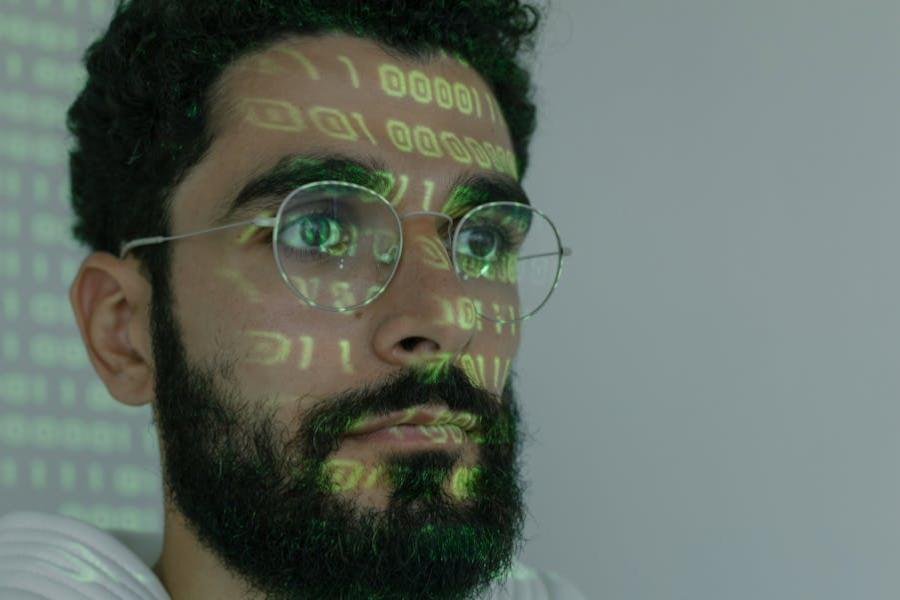Artificial Intelligence (AI) is transforming industries, and one of the most exciting developments is generative AI. Generative AI allows machines to create new content, whether it’s text, images, or even music, by learning from patterns in existing data.
If you’re curious about how AI creates something original and want to explore how to leverage this powerful technology, you may wonder, What is a generative AI course? In this guide, we’ll break down what generative AI is, what you can expect from a course on the topic, and why learning it can be a game-changer for your career or business.
What is a Generative AI Course?
A generative AI course is designed to teach you the fundamental concepts of generative AI and how to apply them in real-world scenarios. Generative AI refers to a subset of artificial intelligence that can create new content based on patterns it has learned from existing data.
This could include generating images, writing text, creating music, or even developing realistic simulations. In a generative AI course, you’ll learn the underlying technology that powers this, such as neural networks and deep learning models like GPT (Generative Pre-trained Transformer) and GANs (Generative Adversarial Networks).
Courses on generative AI typically cover:
- The basics of machine learning and deep learning.
- How generative models work, including techniques like GANs and transformers.
- Practical applications of generative AI in industries like art, design, marketing, and technology.
- Ethical considerations and challenges in AI-generated content.
Whether you’re a beginner or have some experience with AI, a generative AI course will equip you with the skills to understand and build AI models that can create new content from scratch.
Why Study Generative AI?
Before diving into the course structure, let’s first explore why learning generative AI is valuable. Here’s why taking a generative AI course can benefit you:
High Demand for AI Skills
As AI continues to evolve, industries need professionals who can develop and manage AI systems, especially generative AI models. By mastering these skills, you’ll position yourself in a growing job market with opportunities in fields like tech, art, marketing, and entertainment.
Versatility Across Industries
Generative AI is not limited to one industry. It is being used in graphic design, music production, content creation, healthcare, and even fashion. Whether you’re a developer, artist, or marketer, understanding generative AI opens up new ways to innovate and streamline processes.
Boost Creativity and Efficiency
Generative AI tools like DALL-E (for images) and ChatGPT (for text) can boost your creativity by helping you generate new ideas and content. These tools save time, allowing professionals to focus on refining and improving the output rather than creating everything from scratch.
Pioneering Technology
Generative AI is cutting-edge technology, and by learning it early, you can be at the forefront of innovation. Understanding the latest AI trends can help you stay ahead in your field and potentially lead projects that harness the power of AI to solve complex problems.
What Do You Learn in a Generative AI Course?
A generative AI course will cover a range of topics that help you understand how AI models generate new content and how you can apply these techniques to real-world scenarios. Here’s what you can expect to learn:
1. Fundamentals of Machine Learning
To build generative AI models, you need a foundation in machine learning. Most courses will start by covering the basics, including:
- Supervised and unsupervised learning.
- Neural networks and how they work.
- Training models to recognize patterns in data.
Understanding these basics is essential because generative AI builds on these machine-learning techniques.
2. Generative Models
The core of any generative AI course focuses on understanding different generative models, such as:
- Generative Adversarial Networks (GANs): These models use two neural networks, a generator, and a discriminator, to create realistic images, videos, or other content.
- Variational Autoencoders (VAEs): VAEs are used for tasks like image generation and data compression.
- Transformers (e.g., GPT models): Transformers are key to natural language generation and are used in tools like ChatGPT to write text, answer questions, or even hold conversations.
3. Hands-On AI Development
Many generative AI courses include practical, hands-on projects where you can develop your own AI models. For example, you might:
- Create an AI model that generates images from scratch.
- Build a language model that writes text or poetry.
- Develop a chatbot using AI-powered transformers like GPT.
These projects help you apply what you’ve learned and build a portfolio that demonstrates your skills.
4. Ethics and Challenges in Generative AI
Generative AI also raises ethical questions, especially concerning ownership, bias, and misuse of AI-generated content. Most courses will address the ethical implications of using AI to create content, ensuring that you’re aware of the potential risks and challenges associated with this technology.
How Generative AI is Used in the Real World
To understand the importance of taking a generative AI course, it’s useful to see how this technology is applied in different industries. Here are some real-world examples of how generative AI is being used:
- Content Creation – Generative AI can write blog posts, generate social media content, and even create reports. Companies are using AI writing tools like Jasper and ChatGPT to produce content quickly, saving time and resources.
- Art and Design – Artists and designers use generative AI to create unique, computer-generated artwork. Tools like DALL-E and DeepArt can generate images based on text prompts, opening up new possibilities in graphic design, advertising, and fashion.
- Music Composition – AI is now being used to compose music. Platforms like Amper Music and AIVA allow musicians to use AI to generate melodies, harmonies, and full compositions. This helps artists generate ideas and experiment with new sounds.
- Healthcare – In healthcare, generative AI is being used to create models that simulate patient outcomes, helping doctors predict treatment results. It can also be used to generate medical images for training purposes or assist in developing new drugs by simulating chemical reactions.
- Gaming and Virtual Environments – In the gaming industry, AI generates realistic characters, environments, and even storylines. Games like No Man’s Sky use AI to create expansive, procedurally generated worlds that players can explore.
How to Get Started with a Generative AI Course
If you’re excited to learn about generative AI, here’s how to get started with a course:
Choose the Right Course
Many online platforms offer courses on generative AI, including Coursera, Udemy, and edX. When selecting a course, consider your current skill level and the topics that interest you most. Some courses are designed for beginners, while others may require knowledge of coding or machine learning.
Set Clear Learning Goals
Before you begin, think about why you want to learn generative AI. Do you want to use it in your current job, build creative projects, or start a career in AI? Setting clear goals will help you stay focused throughout the course.
Get Hands-On Experience
One of the best ways to learn AI is by doing. As you take the course, participate in any hands-on projects or coding exercises. Many generative AI courses use platforms like TensorFlow or PyTorch to build AI models, so be prepared to dive into some coding.
Stay Updated
Generative AI is a rapidly evolving field. Stay updated on the latest trends and advancements by following AI news, joining AI communities, and continuing your learning even after completing your course.
Popular Generative AI Tools to Explore
Throughout your course on how to create generative AI, you’ll likely encounter several powerful tools that make it easier to build AI models. Here are some popular AI tools you may want to explore:
- OpenAI GPT-3
GPT-3 is one of the most advanced language models and is widely used for generating text. It powers tools like ChatGPT and can be used for tasks ranging from writing essays to answering questions. - Runway ML
Runway ML is a platform that allows creators to use machine learning models for art, design, and video. It’s beginner-friendly and easy to build AI-powered projects without needing deep technical skills. - TensorFlow
TensorFlow is an open-source machine learning framework developed by Google. It’s commonly used in AI courses to build and train neural networks, making it a must-learn tool for anyone serious about generative AI. - Artbreeder
Artbreeder is a creative tool that uses GANs to generate new images based on user input. It’s a popular choice for artists and designers looking to experiment with AI-generated art.
Benefits of Taking a Generative AI Course
By now, you may be asking yourself, Why should I take a generative AI course? Here are some of the key benefits:
Gain In-Demand Skills
AI skills, particularly in generative AI, are in high demand across industries. Completing a course will boost your qualifications and help you stand out in a competitive job market.
Explore New Creative Possibilities
Generative AI opens up endless possibilities for creativity, allowing you to experiment with new ways of creating art, music, or content. Whether you’re an artist, writer, or entrepreneur, generative AI can enhance your creative process.
Learn to Build AI Models
Building your own AI models from scratch is a rewarding skill. Once you understand how generative models work, you can create innovative AI-powered solutions for your business, projects, or personal interests.
Quick Tips for Success in a Generative AI Course
- Stay Curious: Explore different generative AI applications, from art to writing, and experiment with what interests you most.
- Practice Coding: Many generative AI courses require basic coding knowledge, so spend time learning programming languages like Python.
- Ask Questions: If you get stuck, don’t hesitate to ask questions in forums or from your instructor to deepen your understanding.
Conclusion
So, what is a generative AI course? It’s a comprehensive learning experience that teaches you how to harness the power of AI to generate new content, from text to images and beyond. With hands-on projects, practical applications, and a deep dive into the technology behind AI models like GANs and transformers, a generative AI course equips you with the skills needed to stay ahead in an AI-driven world. Whether you want to enhance your creativity, boost your career, or explore cutting-edge technology, generative AI can open the door to exciting new opportunities.
FAQs
What will I learn in a generative AI course?
You’ll learn about machine learning, neural networks, generative models like GANs, and how to build AI systems that generate new content.
Do I need coding skills to take a generative AI course?
While many courses are beginner-friendly, having basic knowledge of programming languages like Python can be helpful.
What industries use generative AI?
Generative AI is used in industries such as content creation, graphic design, music production, healthcare, and gaming.
How can generative AI boost creativity?
AI tools help generate new ideas, create unique content, and assist with repetitive tasks, allowing you to focus on refining creative projects.
Where can I take a generative AI course?
Platforms like Coursera, Udemy, and edX offer online courses in generative AI for learners at all levels.












































Leave a Reply